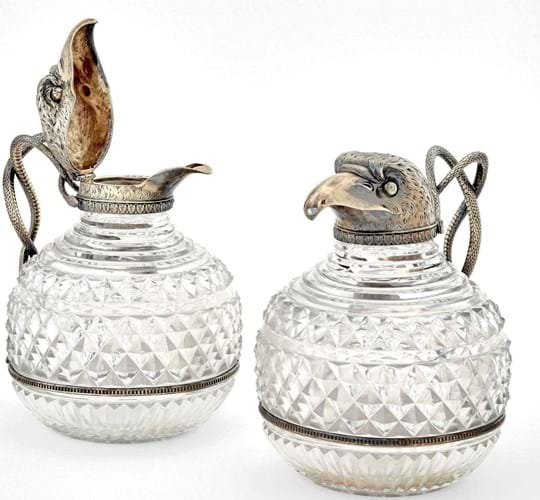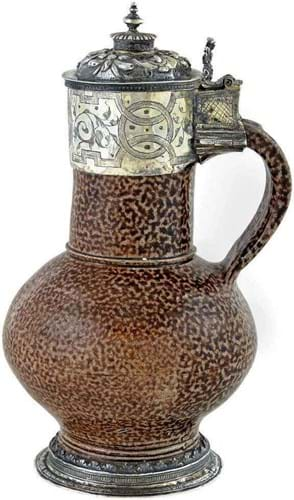It was not unusual for wealthy Elizabethan drinkers to have their German jugs and mugs mounted with silver decorated in the latest style with strapwork and engraved fruit and figures.
Given their relatively small metal content, a number did survive the great bullion melting of the English Civil War, making them perhaps the most recognised example of late- 16th century silver.
An 9in (23cm) example, offered for sale at Doyle (25/20/12% buyer’s premium) in New York on February 5, combines a Rhenish ‘tigerware’ jug with a silver-gilt mount marked for London, 1570, and the unidentified maker’s mark of a head between the initials IC. The provenance records its purchase at Tiffany, New York, in November 1932 for $1800 – an indication of the bullish collecting market for early silver at the time.
By way of comparison, a new Ford Model 18 Roadster was priced that year at $460.
In relative terms, the $8000-12,000 estimate it received almost nine decades later was modest but it proved accurate. The hammer price was $10,800 (£8300).

George III silver-gilt mounted cut glass claret jugs by Digby Scott and Benjamin Smith, $13,000 (£10,000) at Doyle New York.
Sold at $13,000 (£10,000) in the same sale, this time against hopes of $3000-5000, was a handsome pair of 6½in (16cm) George III silver-gilt mounted cut glass claret jugs by Digby Scott and Benjamin Smith, London, 1806.
Entwined snakes formed the handles and eagle’s heads the spout and covers.














